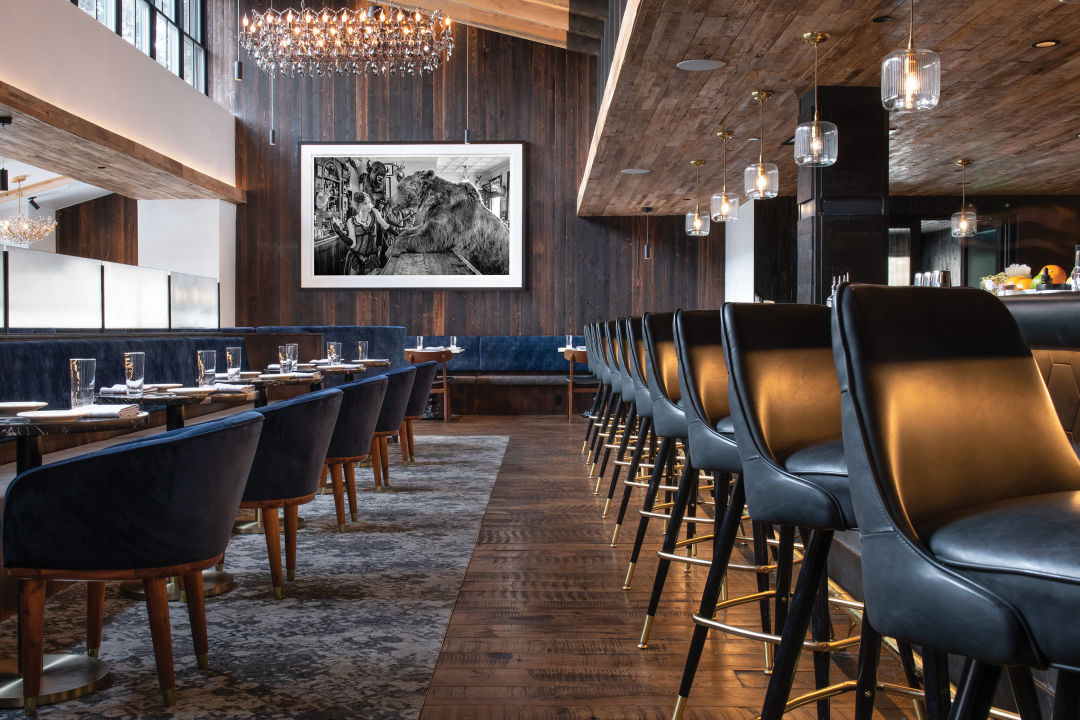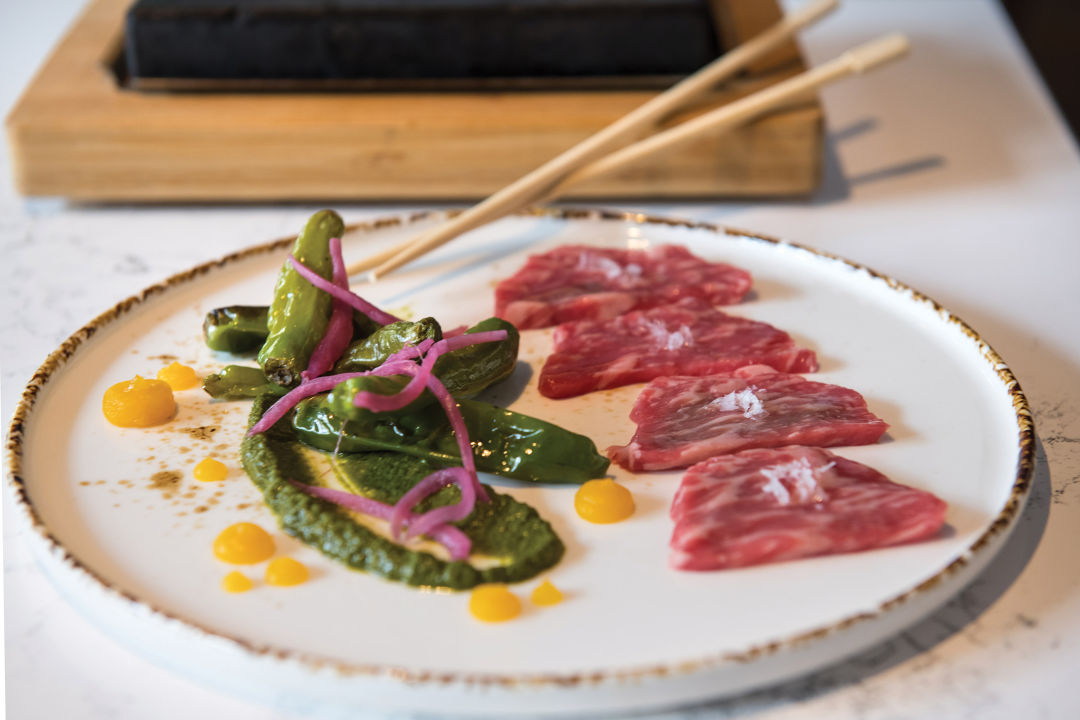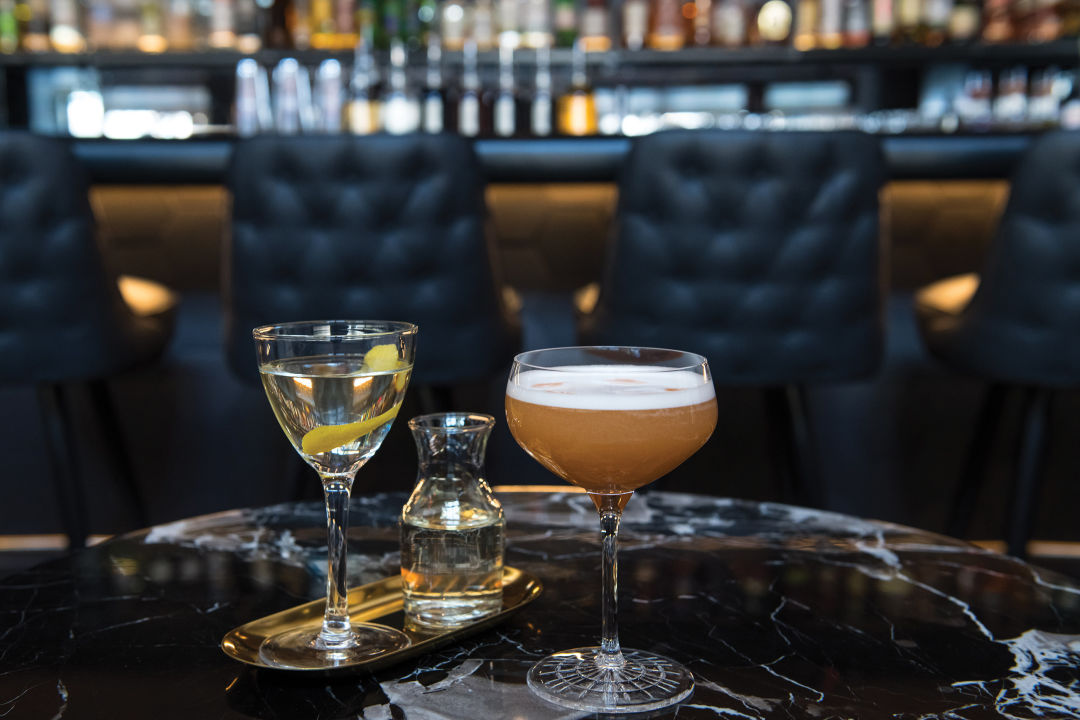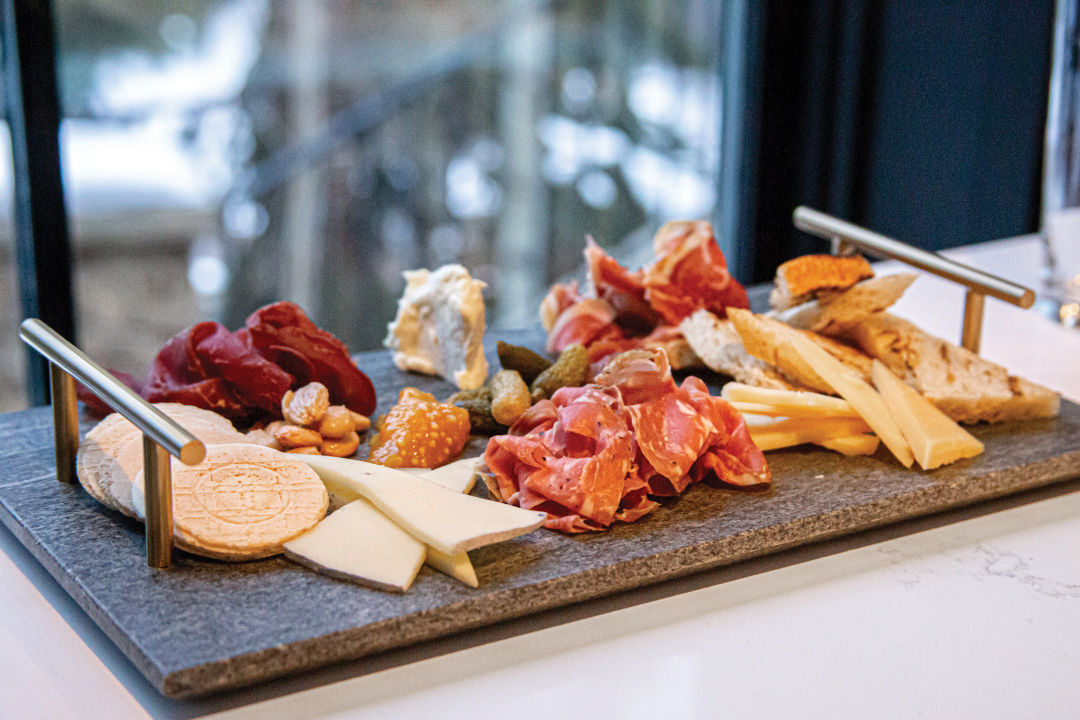Staking a Claim on a Vail Village Dining Destination

The dining room’s decor tempers the Old West’s rough edges with sexy, modern alpine lines.
Image: Courtesy Gravity Haus
Last September, Gravity Haus CEO Jim Deters and COO Dave Ciani were driving the long, straight stretch from Jackson, Wyoming, back to the Vail Valley. Along the way, they were brainstorming the restaurant concept that would replace the beloved Terra Bistro, the culinary anchor of the Vail Village lodge property they had purchased and were in the process of rebranding. As the miles hurtled by, Deters and Ciani volleyed ideas back and forth. “What do you see on that drive?” asks Deters with a laugh. “Lots and lots of cattle.”
And cowboys and ranches and a true sense of being in the deep West. The conversation naturally veered into steak house territory. Could they really pull one off in the Terra space? Would it be too cliché? They chased the thread: Sustainability and connecting the guest with the rancher and farmer were non-negotiables. The space would also have to juxtapose the smoky, rugged, pioneering soul of the Old West with the sexy, modern lines of alpine sensibility. The idea stuck, and Deters quickly assigned it a code name: Sexy Cow.

Colorado Wagyu Hotstone: cook-your-own beef with shiso chimichurri, shishito peppers, aji amarillo, and pickled red onions
Image: Courtesy Gravity Haus
The nickname didn’t make the final cut, but the concept did. And a little more than three months after that road trip, on December 17, Slope Room opened to the public. Despite having already morphed Vail Mountain Lodge into Gravity Haus and the hotel’s Vail Athletic Club into Dryland Fitness, Deters says the decision to replace the decades-old Terra Bistro wasn’t taken lightly. “We debated if we just modernize Terra,” he explains. “But the problem with doing that is you’re always going to be compared to the old. We decided to start anew.”
In addition to changing the restaurant’s name and tweaking its cuisine, Deters and his crew redesigned the space. They activated the east entrance, opened up walls, and moved the bar to make it larger. They also installed 500-pound beams to evoke a barn-like feel and give the vaulted ceilings slope. The final result? A gorgeous and gracious space dressed in soft gray, navy (a high-end wink to denim, perhaps?), and wood. “We’re honoring the tradition we had at Terra while moving it forward,” says Slope Room general manager Jessie Rethman, who also ran Terra Bistro’s wine program for five years. “It reflects the style of dining: [Slope Room] is luxury mountain; Terra was casual mountain.” Deters had said all along that he wanted to tap Western emotion in this project. Mission accomplished: Slope Room feels like a windswept embrace; you’ll want to sink into one of the blue banquettes and stay a spell.

The Haus Martini and an Old Fashioned Sour
Image: Courtesy Gravity Haus
The restaurant’s name is obviously a nod to adjacent Vail Mountain, but it’s also (less obviously) a tip of the ten-gallon hat to Slope Bar, a popular village watering hole from the 1960s. In the process of transforming Terra Bistro into Gravity Haus, Deters dug deep into the town’s history and discovered the long-ago bar. He went with the moniker “Slope Room” because it has the right amount of memorable oomph with a solid dash of historical context to back it up. “The name is always part art, part science, part luck in how it comes together,” Deters says.
Of course, there would be no restaurant without its staff. And here, it looks like luck was again on Deters’s side. Much of Terra’s seasoned team—from line cooks to servers—stayed on. Deters admittedly gambled when he brought on executive chef Alberto Soto and food and beverage director Travis St. George. The two, who rose up under the acclaimed chef Kevin Taylor in Denver, came as package deal. “Oh boy, that’s risky,” Deters laughs. “It could either blow up or it will be a huge success.” Soto and St. George’s glowing references checked out, and the two are driving Slope Room forward with their combined energy. One can feel that synergy in the storytelling that spools behind each dish. This isn’t just a steak house (Slope Room, in fact, refers to itself as a modern alpine bistro); it’s a thoughtfully composed restaurant with—yes, steak and sides—but also dishes that speak to Chef Soto’s Mexican heritage. The hot-stone Colorado Wagyu became an instant hit in part because of its theatricality, but it’s truly memorable because of the zing of the sidelining shishitos, aji amarillo, and chimichurri. Non-steak-house winter menu dishes like the cauliflower chiles en nogada (stuffed poblanos) stand out because of the context they add.

The charcuterie board, a chef’s selection of cured meats, cheeses, and seasonal accoutrements
Image: Courtesy Gravity Haus
“This is representative of me and my story,” Soto says.
And that’s just it. Depth is what makes Slope Room work: a trifecta of legacy, design, and community, a wager on the Western spirit.






































